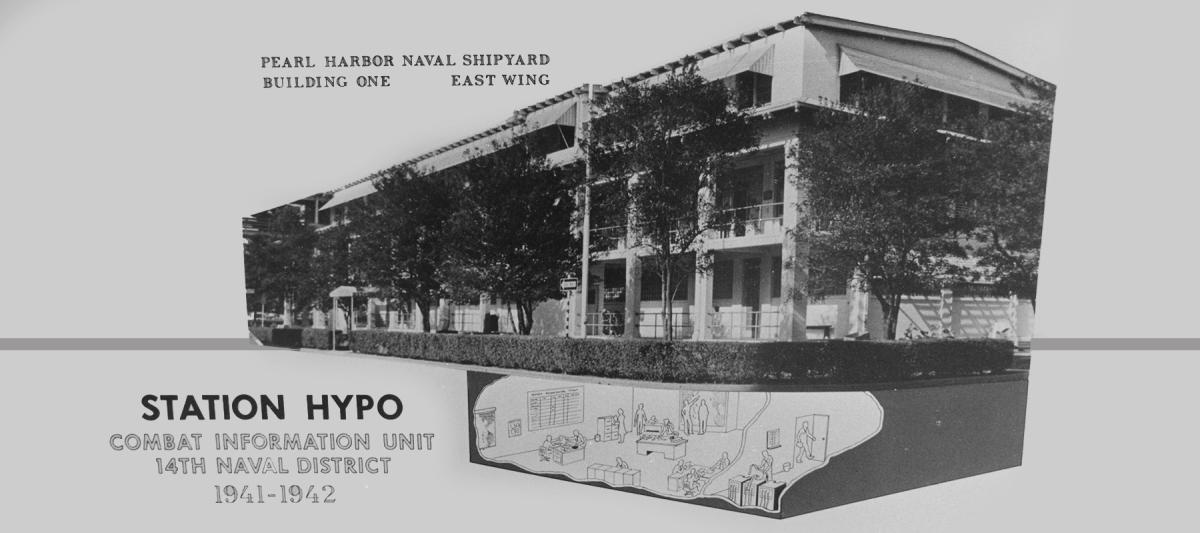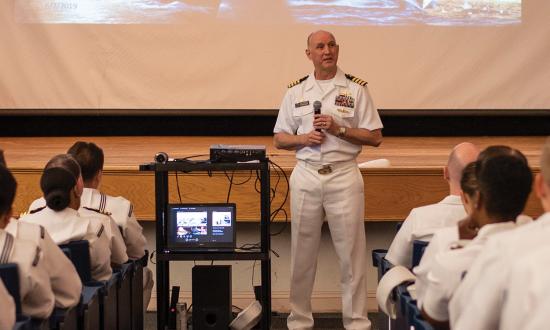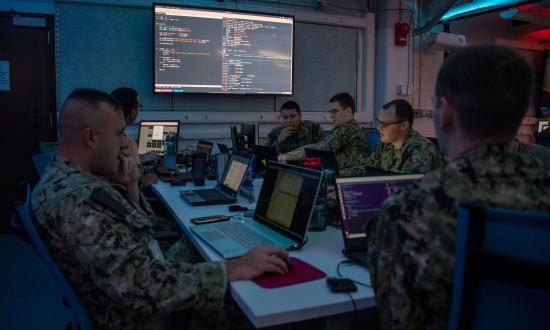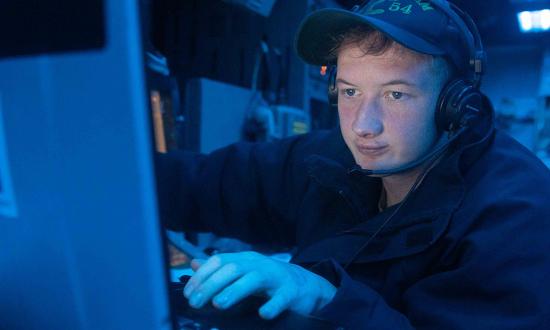A century ago, in January 1924, then–Lieutenant Laurance Safford began his tenure at Main Navy in Washington, D.C. to establish the secretive Research Desk of Code and Signal Section (OP-20-G) within the Office of Naval Communications. This was the Navy’s first dedicated organization to decipher the Morse radio codes of rival naval forces.
Lieutenant Safford set the foundation for a century of naval cryptology by recruiting individuals interested in solving arcane cryptographic problems reminiscent of “deep magic.” He also instituted training for the direct and “danger close” deployment of radio interception techniques against rival navies. Later, Commander Joseph J. Rochefort exemplified the pinnacle of naval cryptology by masterfully blending the art and science of this tradecraft in service of the Navy’s war effort in the Pacific with decisive results at Midway.
Naval cryptology, originally centered on intercepting and decoding rival military communications, has changed with the advancement of communication technologies and adversaries’ dependency on them. Looking forward, it is imperative for the Navy to draw from its rich 100-year legacy, mastering both the art and science of the discipline, while continuing to seek operational relevance.
Dawn of the Decoders: Naval Cryptology’s Origins
During World War I, military use of radio depended on Morse code. These signals were vulnerable to interception, necessitating coded protections. In response, the Navy founded the Office of Naval Communications in 1916. The Navy took further steps to decipher foreign radio codes in 1923, leading to the creation of the Research Desk within the Office of the Chief of Naval Operations, 20th Division of the Office of Naval Communications, G Section (OP-20-G), in 1924.
Among the pioneering members of the newly formed organization were Agnes Meyer Driscoll and then–Lieutenant Rochefort.1 Driscoll dedicated several decades to deciphering Japanese codes and later played a part in efforts against the German Enigma Machine. Rochefort stepped away from cryptanalysis for many years to immerse himself in extensive Japanese studies, afloat roles, and intelligence positions. His diverse background eventually made him the ideal candidate to lead the Fleet Radio Unit Pacific, also known as Station HYPO, which provided pivotal intelligence on the Japanese attack plans at Midway.
Lieutenant Safford created training for covert radio intercept operators, who became known as the On the Roof Gang (called OTRG’ers or roofers).2 The name came from their secret training facilities located on the roof of Main Navy in Washington, D.C. The course taught radio theory, traffic analysis, and cryptanalysis. It was a difficult course; only 7 of 20 trainees graduated from the inaugural class. The first group of graduates would establish a radio intercept post in Guam to collect intelligence on the Imperial Japanese Navy.
Even before the creation of the OP-20-G Research Desk, innovation in naval cryptology had already begun. In 1921, Chief Radioman Harry Kidder began intercepting and decoding Japanese Morse radio communications from the Philippines. He passed his intercepts to the Naval Communications Department in Washington, D.C., who recognized the significance of his work. Kidder would eventually be selected as one of the first OTRG instructors.
By 1927, the Navy was aware of annual Japanese Navy maneuvers near the Mariana Islands. In 1930, these exercises had grown to involve almost the entirety of the Japanese fleet. Radio intercepts enabled then–Lieutenant Joseph Wenger to compile a 115–page report in 1933, shedding light on the Japanese naval order of battle. Wenger would later play a pivotal role in consolidating the Naval Communication Intelligence establishment and would eventually become the vice director of the National Security Agency.
Rochefort and the Triumph of Innovation at Station HYPO
Station HYPO, located in the “dungeon,” a basement of a Pearl Harbor administrative building, played a pivotal role in the Navy’s Midway victory. The team successfully deciphered portions of Japan’s JN-25(b) code and used their knowledge of Japanese personas to gain a deep understanding of the Japanese fleet’s intentions. HYPO’s work and Rochefort’s key insights reached Admiral Chester Nimitz thanks to Rochefort’s colleague from the study in Japan, intelligence officer and then–Lieutenant Commander Edwin T. Layton.3
Under the leadership of then–Lieutenant Commander Joseph Rochefort and deputy and chief cryptanalyst then–Lieutenant Commander Thomas Dyer, Station HYPO adopted principles common in innovative organizations: reducing formalities and uniform inspections, and instead fostering an environment in which the team could concentrate on tasks and communicate openly without concerning themselves about who got credit for the work. As Rochefort said, “We can accomplish anything provided no one cares who gets the credit.” This culture enabled Station HYPO to remain inventive and agile, adapting over time and achieving operational effects. Admiral Nimitz’s unwavering support was indispensable to Station HYPO, as he ensured the organization retained its mission. Nimitz also ensured Station HYPO received manning from the USS California (BB-44) to be retrained as IBM machine operators.
Rochefort and Dyer were specialist officers. Rochefort thrived at the intersection of the arts and sciences as a skilled cryptanalyst, intelligence analyst, and a Japanese linguist. Dyer was deeply versed in the era’s computing technology. Had the Navy not granted Rochefort the unique opportunity for a three-year study tour in Japan and allowed both men to deeply immerse in their niche specializations, the Pacific War might have dragged on longer, exacting a higher human toll. Both officers defied conventional career trajectories, driven by passion and intrinsic motivators more than pragmatic considerations. While Rochefort would be controversially fired shortly after Midway, Dyer would continue and was instrumental in the shootdown of Fleet Admiral Isoroku Yamamoto on 18 April 1943 as part of Operation Vengeance.
The Evolution of Tactical Naval Cryptology
Naval cryptology continued to evolve in the aftermath of World War II, as technology advanced and computers became more capable and compact. This allowed tactical platforms to be outfitted with sophisticated cryptologic equipment but required proximity to adversaries, which meant facing the real possibility of mortal danger.
The beginning of tactical naval cryptology can arguably be traced to 1942 when the USS Enterprise (CV-6) employed a radio intercept unit for the Doolittle Raid, shortly before Midway. Later, 1949 witnessed the inaugural direct support submarine mission on board the USS Cochino (SS-345) navigating near Severomorsk, Soviet Union, with the first direct-support operators Cryptological Technician Chief Petty Officer Harris Monroe “Red” Austin and Cryptological Technician Petty Officer Second Class Robert Schaeffer.
Air missions continued with the PB4Y-2 Privateer patrol bomber, a reconnaissance special electronic search project. Afloat missions began with the “DEHAVEN Special Operations off TsingtaO” (DESOTO) on board the USS De Haven (DD-727), debuting in 1962 for a mission near Qingdao, China. During the Vietnam War, Fleet Air Reconnaissance Squadrons (VQ)-1 and VQ-2 provided indications and warning support to strike aircraft. Afloat operations underwent further refinement with Operation Ivy Bells between 1971 and 1981. During this period, some destroyers were equipped with Quick Intercept Capability vans.
Courage and Tragedy
Throughout its history, naval cryptology has bravely navigated treacherous environments and confronted numerous tragedies. Sacrifices—both profound and numerous—have punctuated its journey, leaving indelible marks across every facet of naval cryptologic operations globally. Other episodes demonstrate the risk in these operations, including the EP-3 incident on Hainan Island, China in May 2001.
1950 bore witness to a heartrending event over the Baltic Sea when a PYB4Y-2 Privateer surveillance aircraft was downed, with no bodies recovered—they were possibly captured and held in Soviet gulag camps. Another calamity occurred in 1965 as flames engulfed Naval Security Group Activity (NSGA) Kamiseya in Japan, with 12 casualties. A dark shadow loomed in 1967 when the USS Liberty (AGTR-5) fell victim to a mistaken Israeli Air Force assault amid the Israeli Six-Day War, leading to the tragic loss of 34 brave men. The following year the USS Pueblo (AGER-2) was ensnared by North Korean forces. Further anguish befell in 1969, during the EC-121 Beggar Shadow incident when MIG-21s from North Korea targeted the aircraft and caused 31 fatalities, of which nine hailed from the Naval Security Group.
Another incident unraveled in NSGA Sabana Seca, Puerto Rico, when a bus assault wounded 10 and claimed two lives. 1987 saw the loss of an EA-3B, taking with it seven souls. The 1987 mistaken Iraqi Air Force Exocet missile attack on the USS Stark (FFG-31) in the Arabian Gulf and the October 2000 Al Qaida terrorist attack on the USS Cole (DDG-67) in Yemen further added to the toll, highlighting the risks faced by information warriors. The tapestry of the global war on terror further showcased the courage and sacrifices of many, across diverse battlegrounds, with seven lost.
The Digital Battlefield: Cyberspace Operations
As the Navy marks the centennial of naval cryptology, the service was mandated by congress to introduce the maritime cyber warfare officer designator, a testament to the burgeoning realm of digital communication technologies. This community will join the cyber warfare engineer and cyber warrant officer communities to provide the Navy additional focus on cyberspace operations. This pivotal move signifies a watershed moment, delineating distinct pathways while maintaining the same heritage of naval cryptologists.
While one path remains rooted in the environmental world, steering through the electromagnetic spectrum, the other trajectory delves deep into the intricacies of computer science and navigates the hidden realms within digital circuits.
Cyberspace also has its own heritage that traces to the early development of computers and the internet. This includes the luminary Grace Hopper, whose brilliance and tenacity defined the Navy’s computing heritage. In the 1940s, then–Lieutenant Grace Hopper, freshly commissioned, anticipated an assignment in cryptography. Fate, however, propelled her to the Mark I computer project at Harvard, a nascent initiative that would shape the course of computing. Beyond her remarkable intellect, Hopper was known at Harvard for her playful spirit, weaving pranks into the fabric of daily life to buoy spirits. This vivacity, coupled with a demeanor that often toed the line of irreverence—sometimes even inching into insubordination—marked her as a unique force.
In many ways, Hopper echoes the ethos of figures such as Rochefort: the relentless pursuit of mastering one’s craft, an interdisciplinary zeal that blended varied streams of thought, and an acquired skill at navigating complex bureaucracies.4
One of the first computer programmers, Grace Hopper pioneered a transformative vision for computing. She championed the radical idea that computers should communicate in natural language, in words that resonated with human understanding, rather than being restricted to machine-level instructions.5 Her unyielding stance against the refrain of “We’ve always done it this way” not only pushed boundaries but also charted a course for the Navy and the broader realm of computing.
While the U.S. government began exploring computer security issues in the 1960s, it was the 1990s that truly heralded the Navy’s immersion into networked computing. The 1997 Joint Staff exercise, Eligible Receiver, exposed the vulnerabilities riddling military systems in relation to computer networks. This awakening spurred creation of Joint Task Force—Computer Network Defense in 1998. The organization later changed to the Joint Functional Combatant Command—Network Warfare and Joint Task Force—Global Network Operations, split into roles for offensive and defensive cyberspace operations.
Recognizing the need for a more streamlined and robust approach to cyber challenges and to add more specialists to the DoD’s cyber workforce, 2010 saw the birth of U.S. Cyber Command. This transformation underscores the Navy’s—and by extension, the broader defense establishment’s—commitment to both anticipate and adeptly respond to the ever-evolving digital landscape.
Naval Cryptology—Anchored in Heritage, Sailing into the Future
Reflecting on a hundred years of naval cryptology, it is clear this heritage is an important resource for cryptologic and cyber professionals to draw on as they lead the community into uncertain waters of the coming decades. Accompanying strong geopolitical challenges, the dawn of human-level artificial intelligence promises to be as profound as the seismic shifts brought about by epochal innovations such as the printing press, steam power, aviation, and the internet.
The indomitable spirit of naval cryptologic heritage remains at the heart of these challenges. Whether navigating the vast expanse of the electromagnetic spectrum or delving into the intricate maze of digital circuits, naval cryptology will be tested and tasked with evolving. In the synthesis of past and future, the naval cryptologic and cyber communities must continue its journey—ever-adaptive, ever-resilient, forging pathways into the unknown.
1. Elliot Carlson, Joe Rochefort’s War: The Odyssey of the Codebreaker Who Outwitted Yamamoto at Midway (Annapolis, MD: Naval Institute Press, 2011), 30–35.
2. Carson, Joe Rochefort’s War, 117.
3. Carson, 50.
4. Kurt W. Beyer, Grace Hopper and the Invention of the Information Age (Cambridge, MA: The MIT Press, 2012), 12–29.
5. Beyer, Grace Hopper and the Invention of the Information Age, 275.






